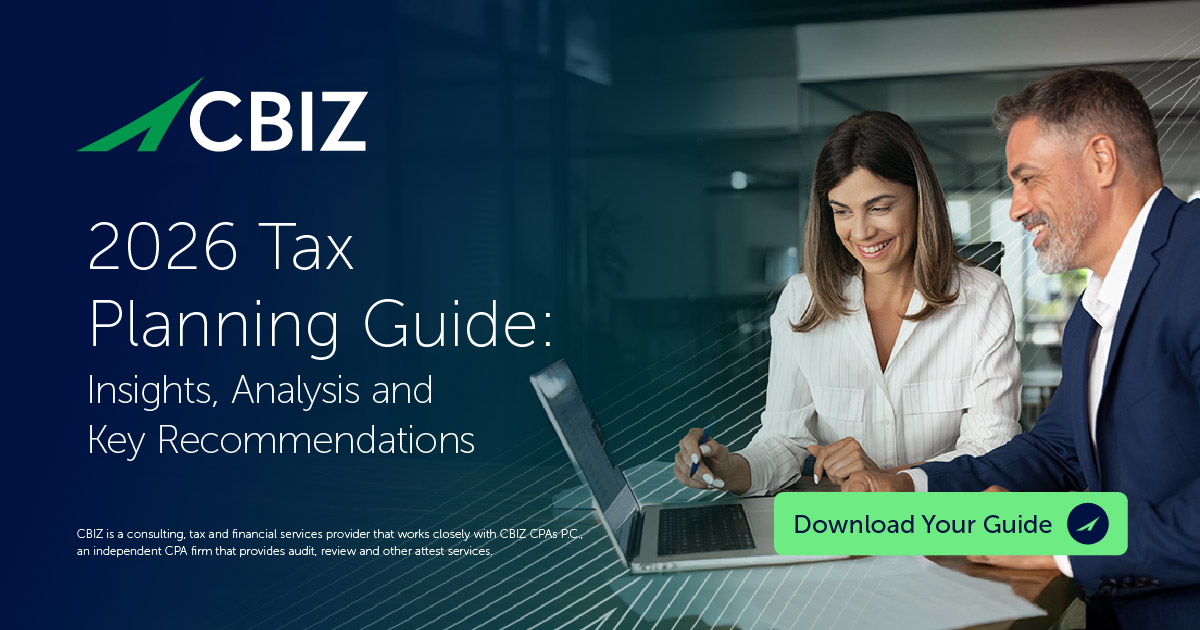Effective July 4, 2025, section 168(n) of the Internal Revenue Code (IRC) was enacted as part of the One Big Beautiful Bill Act, and it provides a special 100% depreciation allowance for real property categorized as Qualified Production Property (QPP). QPP can provide taxpayers with significant federal and possibly state income tax benefits; however, several requirements must be satisfied, and some outstanding definitional questions remain. Many of the issues will need to be resolved through IRS guidance.
QPP is broadly defined as the portion of nonresidential real property used in manufacturing, refining, agricultural production, or chemical production of a qualified product. However, a qualified product excludes food and beverages prepared in the same building as a retail establishment where the property is sold (e.g., food prepared at a restaurant). QPP also excludes any nonresidential real property used for offices, administrative services, lodging, parking, sales activities, research activities, software development, or engineering activities. In addition, facilities used in other functions unrelated to the manufacturing, production, or refining of tangible personal property are excluded, as well as property subject to the Alternative Depreciation System. Conceivably, these might include facilities related to the storage or warehousing of raw materials, work-in-progress, and finished goods, as well as those related to their transportation.
Generally, a taxpayer can make an election to deduct 100% of its basis in the QPP for the tax year it is placed in service. It appears to be an “all or nothing” election, so either 100% of the QPP’s cost is deducted in the year it is placed in service, or it may otherwise need to be depreciated over 39 years. Unlike 100% bonus depreciation, which applies automatically unless a taxpayer formally elects out of claiming it, the 100% depreciation allowance for QPP must be affirmatively elected. Congress has directed the IRS to provide a method for making the election through regulations.
It appears that lessors of otherwise qualifying QPP may not be able to take advantage of the new deduction, and that the owner of the QPP must also be the taxpayer that is engaging in the qualified production activities. Forthcoming regulations might provide some form of relief from this provision if the owner of QPP and the qualifying manufacturer/refiner/producer are sufficiently related.
Several terms are involved in determining eligibility for the QPP deduction. First, the property must be used as an integral part of a qualified production activity inside the U.S. or its possessions, the original use must begin with the taxpayer, QPP construction must begin after Jan. 19, 2025, and before Jan. 1, 2029, and the property must be placed in service before Jan. 1, 2031. However, there are provisions in the law that might allow taxpayers acquiring property to make the 100% depreciation allowance QPP election if others, or if others did not previously use the property in QPP activities between Jan. 1, 2021, and May 12, 2025.
Furthermore, albeit unclear, it appears that additions to qualifying property could also be eligible for QPP treatment.
The new law directs the Treasury to issue regulatory guidance; however, it is uncertain whether and when such guidance will be forthcoming. Accordingly, while taxpayers may look to other areas of the existing IRC and regulations for help in defining terms, taxpayers should consult with their tax advisors before making decisions based on this approach.
Need for Cost Segregation Studies?
When multi-use facilities are constructed or acquired (those that house both qualified production activities and non-qualified activities), taxpayers should engage a cost segregation study expert to separate the construction costs related to 100% deductible QPP from those expenditures that are unlikely to qualify. Taxpayers should have a timely cost segregation study performed near the time the property is built or acquired, so access to blueprints, invoices, and other relevant data related to the project will be more readily available for examination.
State Tax Effects Uncertain
Most states do not allow taxpayers to claim bonus depreciation due to laws that formally “decouple” them from the bonus depreciation provisions of section 168(k). However, 100% QPP depreciation is not part of section 168(k), but is instead found in new section 168(n), and most states currently say nothing about section 168(n) decoupling, which is not surprising given the newness of the law.
In those states which are “rolling conformity” states, it seems reasonably possible that both a federal and state tax benefit can be secured unless the state’s existing laws somehow already address 168(n) or the state legislature formally decouples from 168(n) as well through future legislation. To date, the states of Maryland and Rhode Island are two “rolling conformity” states that have announced decoupling, and presumably others will in the future.
Summary
New section 168(n) introduces a potentially significant income tax benefit through a depreciation deduction equal to 100% of the cost of new factories and other qualified production property in the year the property is placed in service. It is allowable for manufacturers, refiners and other producers who purchase or construct new production facilities within the U.S. over the next several years. Prior to the enactment of section 168(n), such facilities were typically required to be depreciated over 39 years.
The law excludes property that is not directly used in qualified production activities and prohibits landlords from claiming the deduction. Certain other qualifications must also be met to qualify.
Taxpayers who are purchasing potentially qualifying facilities or are planning to construct new ones in the next few years should consider engaging cost segregation study experts to guide them on potentially maximizing their depreciation deductions. There may also be valuable state income, property, and sales and use tax benefits available, too.
There are several areas that call for regulatory and other authoritative guidance from the IRS, which we hope to receive in the next several months.
In the meantime, if you have any questions about the new QPP provisions, please contact your CBIZ tax professional.
© Copyright CBIZ, Inc. All rights reserved. Use of the material contained herein without the express written consent of the firms is prohibited by law. This publication is distributed with the understanding that CBIZ is not rendering legal, accounting or other professional advice. The reader is advised to contact a tax professional prior to taking any action based upon this information. CBIZ assumes no liability whatsoever in connection with the use of this information and assumes no obligation to inform the reader of any changes in tax laws or other factors that could affect the information contained herein. Material contained in this publication is informational and promotional in nature and not intended to be specific financial, tax or consulting advice. Readers are advised to seek professional consultation regarding circumstances affecting their organization.
“CBIZ” is the brand name under which CBIZ CPAs P.C. and CBIZ, Inc. and its subsidiaries, including CBIZ Advisors, LLC, provide professional services. CBIZ CPAs P.C. and CBIZ, Inc. (and its subsidiaries) practice as an alternative practice structure in accordance with the AICPA Code of Professional Conduct and applicable law, regulations, and professional standards. CBIZ CPAs P.C. is a licensed independent CPA firm that provides attest services to its clients. CBIZ, Inc. and its subsidiary entities provide tax, advisory, and consulting services to their clients. CBIZ, Inc. and its subsidiary entities are not licensed CPA firms and, therefore, cannot provide attest services.
















